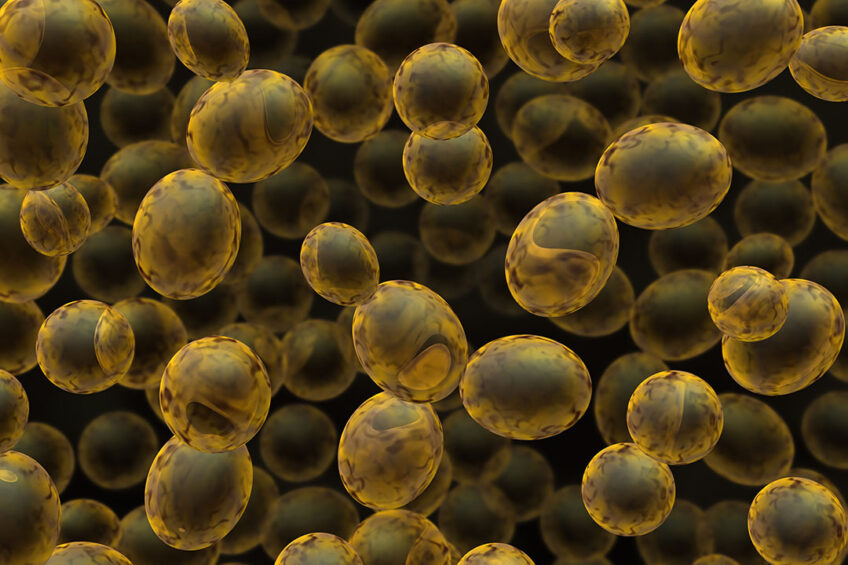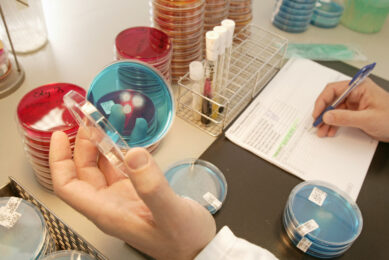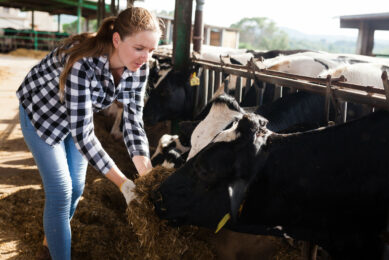Functional properties of the yeast cell wall against pathogens

The use of antibiotics was a success for animal health and production over the last decades. However, scientific evidence suggests that the huge use of them has led to increased antibiotic resistance. One alternative that has similar effects to antibiotics is the functional properties of the yeast cell wall.
Consumer pressure and worries about the harmful effects of antibiotics have driven researchers to think about alternatives to keep animals healthy and efficient. One alternative of natural agents with similar effects of antibiotics is the use of functional properties of the yeast cell wall (YCW).

Yeast cell wall
The YCW is derived from a yeast extraction process that accounts for 25% of the total cell and with a complex structure, composed mainly by, cell wall proteins or mannoproteins, glucans, chitin, and N-acetylglucosamine. The main products of YCW are Mannanoligosaccharides (MOS) and β-glucans (BG). They are involved in a wide variety of functions, like reducing pathogenic bacteria, enhancing beneficial bacteria, increasing villus height, decreasing crypt depth, modulating the immune response improving health and performance.
Beneficial contribution of MOS
It’s understood that an animal’s digestive tract needs to have well-balanced microflora for normal functioning, MOS can contribute to reducing the load of pathogenic bacteria and enhancing the growth of beneficial bacteria. The adhesion of bacteria with harmful effects for animals is carried out by type-1 fimbriae (Ex.: Salmonella and E. coli), which contains mannose-specific lectins, and it has a high affinity on intestinal mucosa. MOS works by binding with type-1 fimbriae, so bacteria can move through the intestine without colonisation. Researchers have shown a reduction of E. coli, Salmonella spp, S. typhimurium and S. Dublin when animals were fed MOS. Even more, researchers observed an increase in the synthesis of goblet cells for a period, that is present in the villi membrane of the intestine. These cells are responsible for secreting mucins, which competitively bind to the bacteria, and support the clearance of pathogens from the intestine. As a consequence, the numbers of beneficial bacteria in the intestines, mainly Lactobacillus and Bifidobacteria spp are enhanced. Each of the beneficial bacteria has one way of contributing to a decrease in the pathogenic bacteria.
As part of the healthy intestinal environment, researchers have observed long villi and shallow crypts. A larger surface area helps in the absorption of nutrients, and a low renewal rate allows efficient enzyme production and maturation of the intestinal cells. The fermentation may be increased resulting in the production of short-chain fatty acids, involved in cell proliferation in the intestinal mucosa. It may be seen to enhance the absorption of nutrients and improved performance.
Another potential effect is improving cellular, humoral and mucosal immunities. In the intestine a variety of macrophages as components of gut-associated lymphoid tissue (GALT) are present, that recognise pathogens by a unique type of molecules that are only on microbes, called ‘pathogens associated molecular patterns’ (PAMP), present in MOS and others YCW components. Consequently, MOS bind with the PAMP receptors present on defence cells of GALT and then trigger the immune system. Table 1 shows the results from some trials carried out with Biorigin’s products with MOS soluble and insoluble.
Gastrointestinal health and β-glucans
β-glucans is a heterogeneous group of natural polysaccharides, consisting of D-glucose monomers linked by a β-glycosidic bond, and the individual glucose subunits are primarily linked either by (1,3)-β, (1,4)-β, or (1,6)- β glycosidic bonds. However, the manufacturing process and the isolation method impact the BG structure and functions. Researchers have demonstrated that 1,3/1,6BG have positive effects on improving immunity, and when used as broad-spectrum immunopotentiators, it can improve gastrointestinal health by increasing mucosal barrier functions and contributing to animal growth. BG may have a substantial influence on the composition of intestinal microbiota, which not only helps digestion but directly and indirectly may support immune activities of the GALT. Further, researchers have reported other health benefits, such as anti-inflammatory, anti-microbial, hepatoprotective, weight loss, anti-diabetic and cholesterol lowering functions. Researchers have shown BG degraded inside macrophages and released, which makes them eventually available for the circulating system and systemic distribution. It has induced the phagocytic activity, the oxidative metabolism of neutrophils and monocytes, interleukin (IL)-1 production of peritoneal macrophages of neutrophils and monocytes, decreasing the level of the pro-inflammatory IL-6 and increasing of the anti-inflammatory IL-10. Still, have been observed increases in the total number of monocytes as well as of pro-inflammatory monocytes, with increased plasma cytokine production of IL-2, Il-4, IL-5, and interferon-gamma, the humoral acute phase immune increased by lysozyme and ceruloplasmin activity. Besides that, it is important to note insoluble BG are able to activate both the innate and the adaptive immune responses and soluble β-glucans are most effective via the complement system. Table 2 shows results from some trials of Biorigin’s products with BG.
The products are based on mannanoligosaccharides (MOS) and β-glucan. All of them are derivative from a yeast primary culture (Saccharomyces cerevisiae), production of cells with higher availability of its compounds and functionality. Research shows that MOS and β-glucan efficiency is not directly dependent on the percentage of them present in the product, but essentially on its production process, which is essential to ensure adequate MOS and β-glucan exposure and functionality.
Authors: Robson Sfaciotti Barducci, PhD and Anderson Aparecido Dias Santos, PhD, Specialist at Biorigin – Zilor Research and Development Center
References and further information are available upon request
Join 13,000+ subscribers
Subscribe to our newsletter to stay updated about all the need-to-know content in the dairy sector, two times a week.






